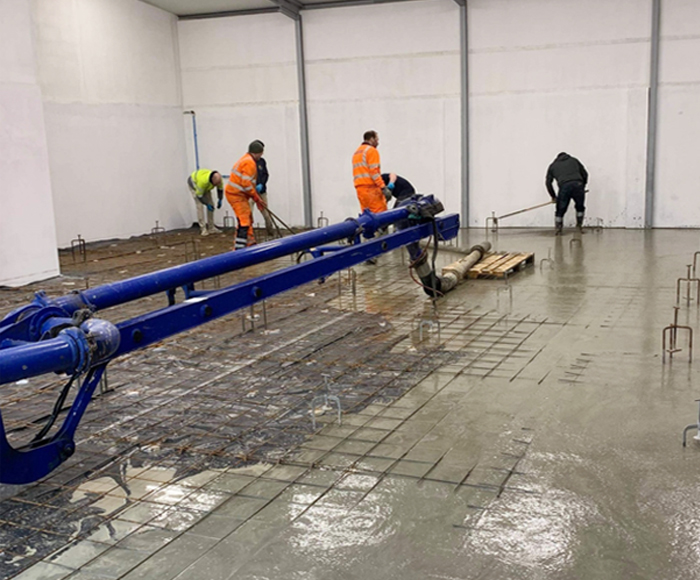Why do you need to use a screed on the floor of a new building? This is something that we are asked from time to time at UK Screeds as experts in floor preparation service in London. The answer is that if you want your floors to be flat and level, then you need a screed laid over the top of the concrete substrate before you lay the final flooring, whatever it may be.
This is especially important if you are laying something like tiling or stone, because if the surface is not level, then when weight is put on top it can cause cracking – even if it is only someone walking on it.
There are two main types of screed. One is the traditional sand and cement mix, while the other – and is the type that we supply – uses anhydrous (dry) calcium sulphate. When mixed with water, this produces gypsum which replaces the cement as a binder.
Now, we have to put our hands up and say that our liquid gypsum screed is somewhat more expensive than sand and cement. However, the cost of the material is more than offset by the cost of labour. If you are using a sand and cement screed when carrying out floor preparation service in London, it has to be barrowed on to the substrate and then laid by hand by a labourer on hands and knees. Even a skilled worker can do no more than around 100 square metres in a day though.
Time-Saving
By contrast, the liquid screed we supply saves a considerable amount of time. We deliver it to site ready mixed and then connect a pump and a long hose and simply pump it into place. Because it is liquid it levels itself out, so all we then need to do is to run over it with a dappling bar to remove any air bubbles and leave it to dry. We can do as much as 2,000 square metres in a day! Look at the cost savings there!
Another big advantage is that our screed doesn’t shrink when it dries. So, it doesn’t curl up at the edges as sand and cement screed can. It is also perfect for use with underfloor heating because, being liquid, it completely covers the heating pipes so the heat transfer into the room is even across the floor.
There are even more benefits. Our screed can be laid a lot thinner than sand and cement, so you use less material in the first place. That also helps with the heat transfer into the room. It takes less energy to heat the room to the desired temperature than with a sand and cement screed.
These are just some of the many reasons why more and more architects are insisting on liquid anhydrite screeds today.








